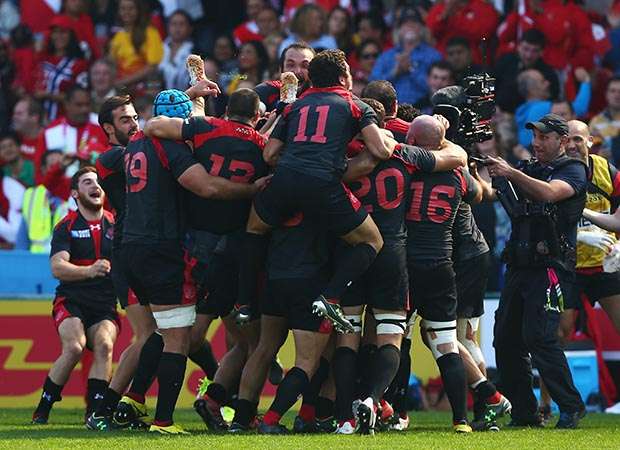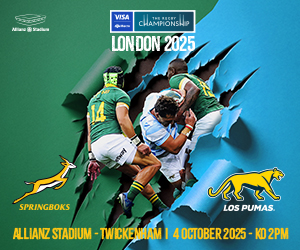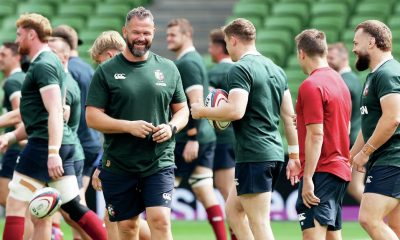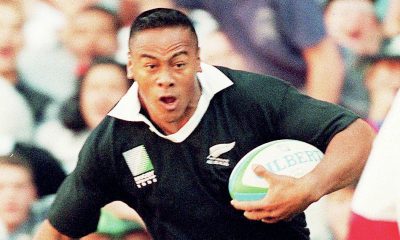
 The first week of the World Cup brought a big shock. No, not Japan beating South Africa (although that was pretty big), but the rebirth of one of the most effective attacking and defensive set piece areas of the game – the scrum.
The first week of the World Cup brought a big shock. No, not Japan beating South Africa (although that was pretty big), but the rebirth of one of the most effective attacking and defensive set piece areas of the game – the scrum.
Yes, as an old prop, I am bound to say that, but look at the games and the teams that got the results and one thing stands out – those with the strongest scrums were the winners.
From the moment the Georgian scrum dismantled the Tongan scrum there was only going to be one winner. The power plays that frustrated and stifled every attempt by Tonga to impose themselves on the game, came from the dominant Georgian scrum.
Then the idea that a Japanese pack would have the confidence to elect to take on the mighty Springbok pack in the 83rd minute of the game, believing that they could win their own ball and set up the winning attack, is truly mind-blowing.
The doom and gloom merchants who prophesised that the scrum would be a major concern at this World Cup and could ‘put people off’ the game because of the continual resets that blighted the Six Nations, have been silenced by the Tier Two nations. Their adherence to the ‘old values’ of the game has seen them shock and surprise those above them in the world rankings, much to the delight of the fans.
Despite the upsets we won’t see too many more, if any of the Tier Two nations make the knock-out stages but they could easily decide which Tier One teams finish first or second of their pools and that could make a significant difference to how far those Tier One teams progress.
England, for instance, would have expected to avoid both South Africa and New Zealand if they win their pool but, as a result of the Japanese win, England could now face South Africa in the quarterfinals and, unfortunately, unlike Japan I am not sure the England pack could compete.
In the final warm-up game against Ireland and the game against Fiji the England scrum lost balls against the head despite the fact that the scrum feeds were as bent as a banana!
It would seem that the problem is that Tom Youngs is getting his feet in the wrong position to strike for the ball under pressure. Although Tom is an absolute dynamo around the field as both a tackler and ball carrier, he is not a natural hooker (as I have said before) and that puts pressure on the whole of the front row.
It’s not a size issue as Brian Moore was not the largest of men but never had a problem even against the biggest of packs because he was technically able to strike for the ball, no matter the pressure. Body position is all important if you are striking for the ball. A hooker must sit over his loose head’s inside leg at a slight angle with the tight head slightly in front, to help relieve pressure.
If the hooker stands straight, as Youngs does, he will be taking pressure on both shoulders and that will restrict his foot movement, making lifting the foot to strike quickly, difficult, if not impossible. The England scrums in the Fiji game were a mess, winning just six out of nine while the Fijians won all seven of theirs and that is not acceptable if England want to win the World Cup.
So, the scrum’s not a problem – but the TMO certainly is as referees call for verification with almost every decision they take and are abdicating their responsibilities to the game. South African referee Jaco Peyper started the ball rolling by constantly referring to the TMO even after he had spoken to his fellow match officials, effectively slowing what is already a slow process to an absolute crawl, frustrating both players and the crowd.
The try scored by Fiji No. 9 Nikola Matawalu was awarded by the referee and then referred to the TMO who disallowed it and I have to ask, why? The laws state that the player must be in control of the ball and put downward pressure for a try to be given. Despite the ball being dropped it didn’t go forward (was not knocked on) and controlled downward pressure was applied which meets all the try scoring criteria and yet the try was disallowed.
The tackle area has also seen referees seem to lack a sense of empathy for the game, as tacklers attempting to roll away are trapped by support players clearing the ball and get penalised. How can a tackler roll away with two or three opponents holding him in?
Referees must use a little common sense if a player is genuinely trapped and shouldn’t give a penalty that could alter the outcome of the game.
Another abdication where referees let down the game is by not enforcing the straight put in. They say they have too much to look at. I say, rubbish. A set scrum must be still before the ball is put in, the referee tells the scrum half when the scrum is still and safe for the put in and he usually is looking down the tunnel.
Not all referees had a ‘bad day at the office’ as three examples of good refereeing: Wayne Barnes in the New Zealand /Argentina game, Nigel Owens Georgia/Tonga game and French referee Jerome Garces Japan /South Africa show. All three struck the right balance between letting the game flow and enforcing the laws. A special word for Garces who could have blown the final whistle at least once before the fateful last Japanese try – but he allowed the Japanese to have that last play and make history and although his part in the game will be largely forgotten, every rugby fan will remember the moment he blew to end the game.
Just one last thing, Fiji back-row forward Dominiko Waqaniburotu has been given a ban by the citing officer for a dangerous tackle that referee Peyper referred to the TMO and then penalised, later in the game. Geoff Parling committed the same type of tackle on a Fijian and was penalised but no referral was made to the TMO and no citing or ban has befallen him. Why?


British and Irish Lions
British and Irish Lions told: Beware Australian dirty tricks

International Rugby
George Ford joins 100 club in England victory over Argentina

International Rugby
England 35-12 Argentina: Centurion George Ford leads the way

International Rugby
Will Muir makes the most of his sevens training for England


























You must be logged in to post a comment Login